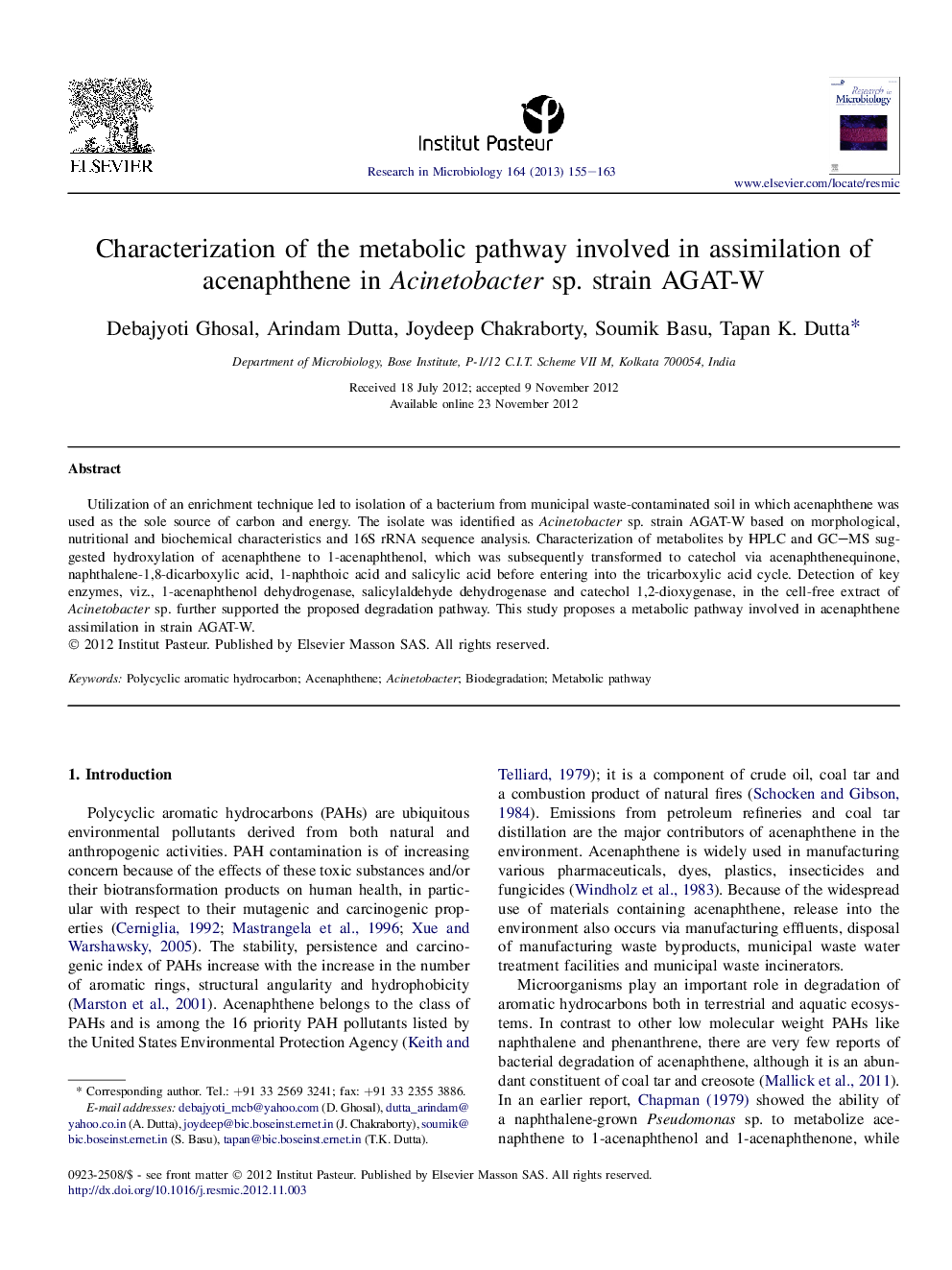| Article ID | Journal | Published Year | Pages | File Type |
|---|---|---|---|---|
| 4358611 | Research in Microbiology | 2013 | 9 Pages |
Utilization of an enrichment technique led to isolation of a bacterium from municipal waste-contaminated soil in which acenaphthene was used as the sole source of carbon and energy. The isolate was identified as Acinetobacter sp. strain AGAT-W based on morphological, nutritional and biochemical characteristics and 16S rRNA sequence analysis. Characterization of metabolites by HPLC and GC–MS suggested hydroxylation of acenaphthene to 1-acenaphthenol, which was subsequently transformed to catechol via acenaphthenequinone, naphthalene-1,8-dicarboxylic acid, 1-naphthoic acid and salicylic acid before entering into the tricarboxylic acid cycle. Detection of key enzymes, viz., 1-acenaphthenol dehydrogenase, salicylaldehyde dehydrogenase and catechol 1,2-dioxygenase, in the cell-free extract of Acinetobacter sp. further supported the proposed degradation pathway. This study proposes a metabolic pathway involved in acenaphthene assimilation in strain AGAT-W.
